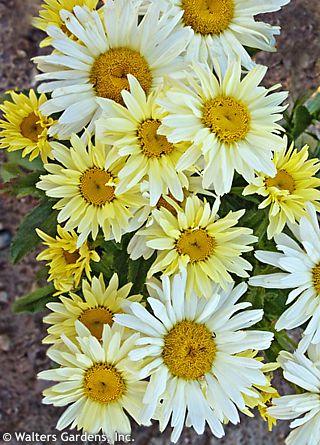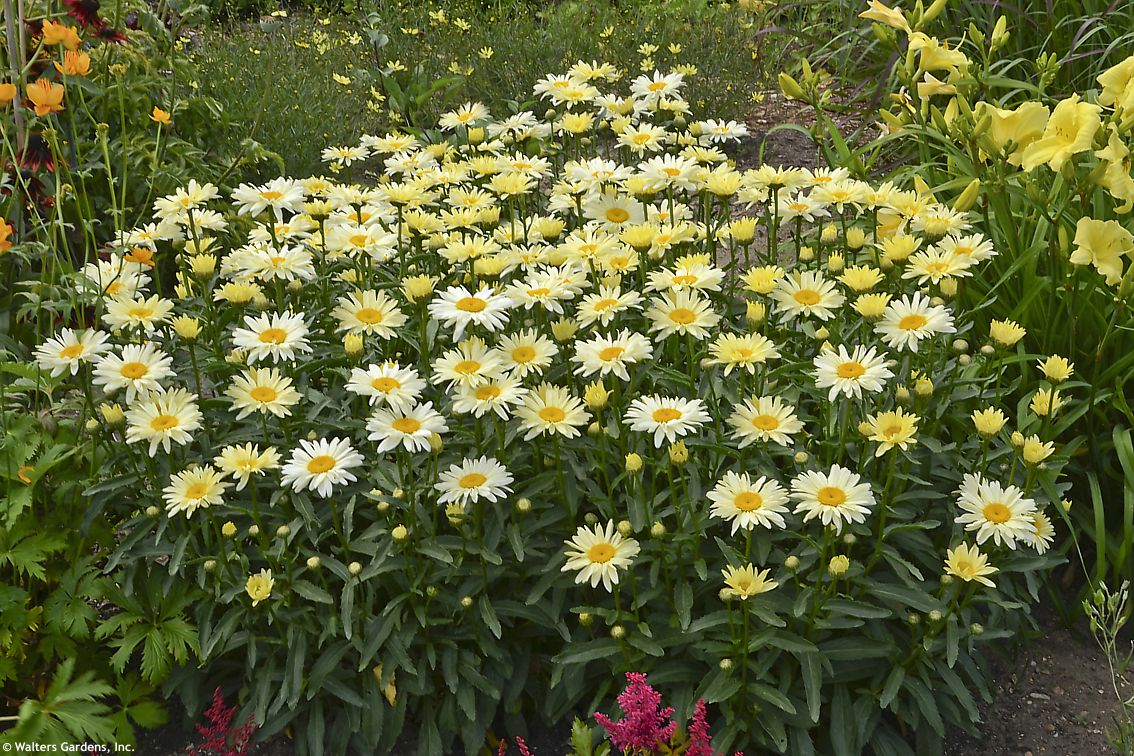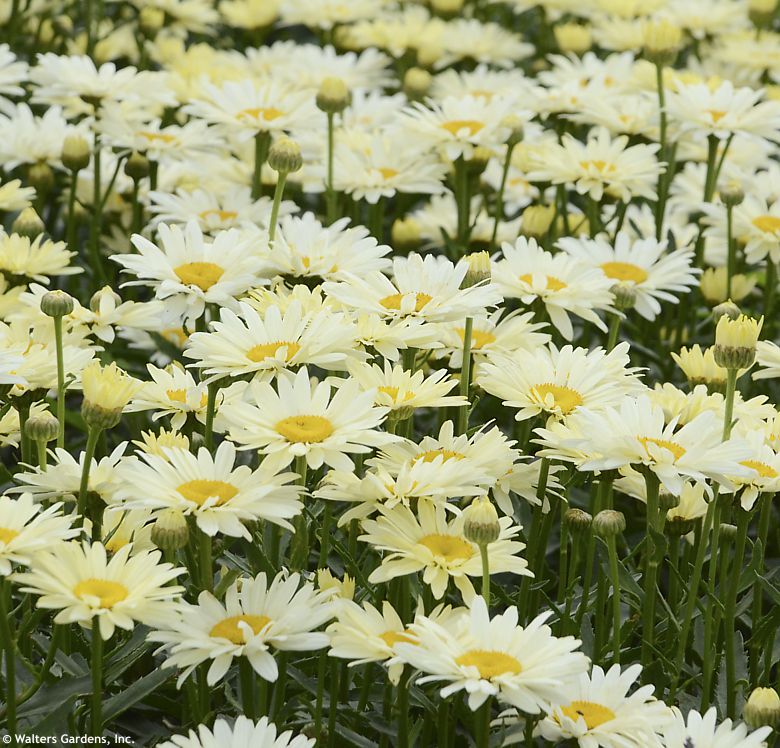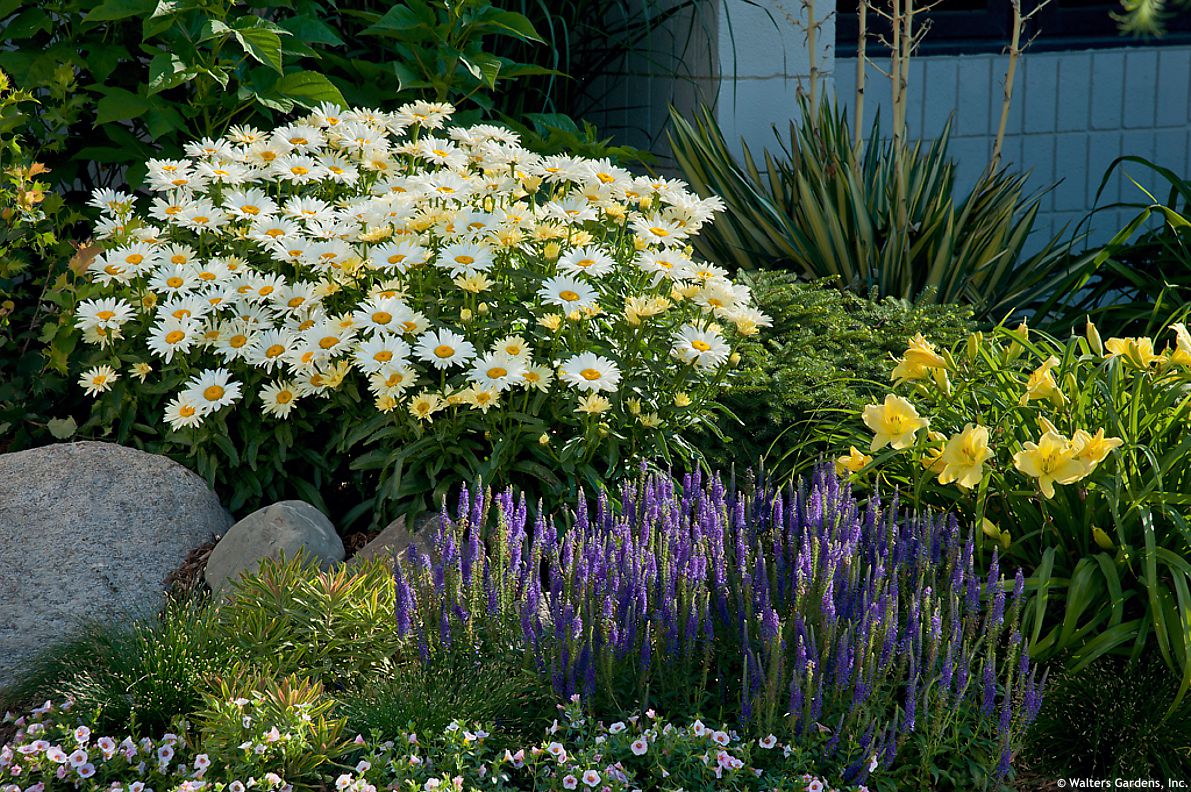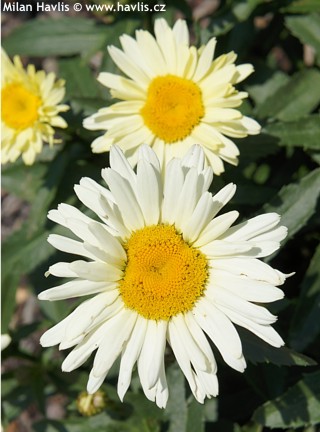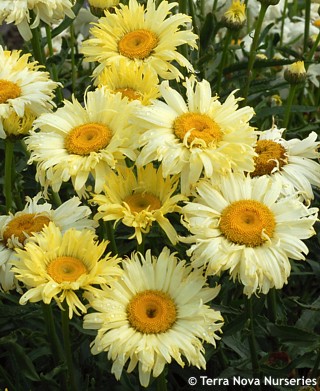Leucanthemum 'BANANA CREAM' Shasta daisy


Leucanthemum
Shasta daisy is a hybrid daisy which originated by crossing l. lacustre and l. maximum. It’s alternative name l. x superbum is accepted but not used very often anymore. Shasta daisy is a large-flowered version of a common daisy which is an omnipresent plant perennial of Czech meadows and cottage gardens. It is elegant and gentle and thanks to modern breeding you can enjoy this handsome flower in several varieties offering shorter stems and repeat blooming.Individual flowers excel in longevity (up to 4 weeks) and commonly appear from June. While they bloom atop 35-45 cm tall stems new buds are formed in their lower parts. Deadheading and feeding will encourage formation of more flower buds until September. Leaves are deep green and glossy, narrowly lance-shaped, distinctively serrated. The plant makes a compact, freely flowering clump. Patent No. PP23181 was granted in 2012.
Shasta daisy is widely soil adaptable provided the soil is evenly moist but well-drained. Just make sure the crown of plant is just above the soil level, never deeper. For best results we recommend growing it in humus-rich soil where the number of flowers and overall plant appearance will be better. It is commonly disease resistant but slugs become a problem when they find it since they love it - both flowers and foliage. Make sure they stay away from this beauty, otherwise they can eat the entire plant leaving bare stems in the bed. Fully hardy to min. -30 °C (USDA zone 5).
Last update 21-11-2022
Goods are shipped all over Europe. For Russia and U.K. and for further details please read about SHIPPING OPTIONS HERE.
Are you interested in a serious discount for orders NOV-FEB? Check your options here.
THE PRICES INCLUDE VAT of 15%. For quick conversion you can use 1 CZK = approx. 0.04 EUR
- STANDARD QUALITY - Plants of this group are 1st class quality with number of branches and overall density adequate to their size and age, considering they were container grown.
- DE LUXE QUALITY - This label guarantees a luxurious quality of manually selected plants that, compared to their height and age, are exceptionally dense and beautiful.
- EXTRA - These plants are usually mature and bigger specimens with exceptional overall appearance.
- STANDARD (as described in the plant form) means a tree with a trunk of 190-210 cm and a crown at the top, unless specified differently. The commercial size for trees is their girth measured in the height of 1m from ground.
- HOBBY - These plants are of the same quality as our standard-quality plants but younger and therefore cheaper.
- SHRUB - a woody plant with branches growing bushy from the ground level.
- HALF-STANDARD or MINI-STANDARD - a small tree with shorter trunk, its size is usually specified.
- FEATHERED - These are trees with branches growing already from the base of the trunk and up along the stem.
- GRASSES and PERENNIALS - Sizes given usually read the diameter of the pot or the clump, as specified.

































